Decorating with plants – inspiring ways to use plants in interior design
Take inspiration when decorating with plants from these incredible interiors where houseplants make a statement
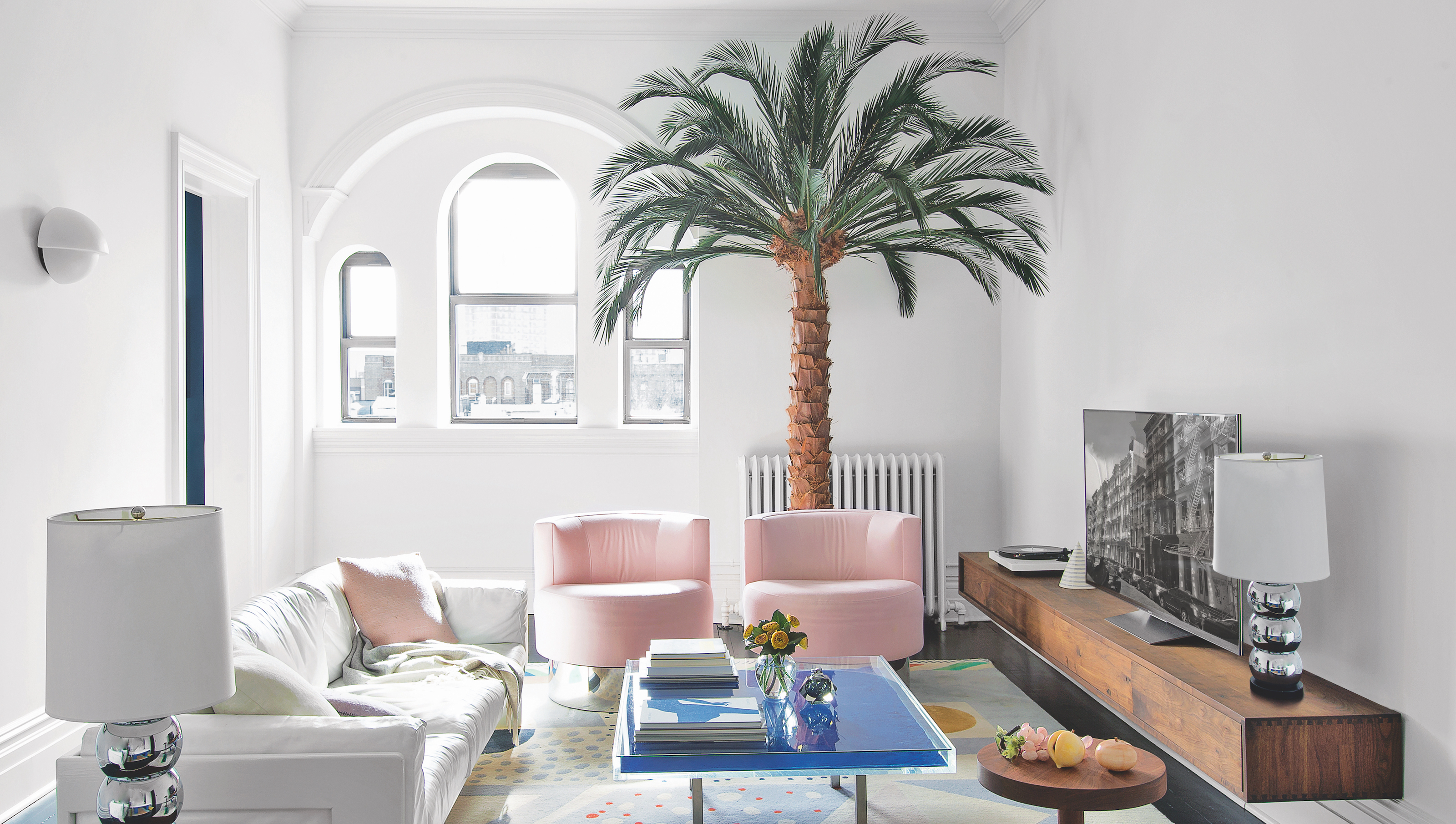
Decorating with plants is a surefire way to enhance your home. Bringing foliage into your living space literally breathes life into it, due to the oxygen producing qualities of plant photosynthesis.
Humans depend on nature for survival, and with more of us living in cities than ever before, the desire to bring the outside in is flourishing in architecture and interiors.
The most popular houseplants look gorgeous and make us feel good, too. It doesn't matter whether you're just starting on your houseplant journey or if you're a green-thumbed expert; it's good to decorate with plants.
'I encourage my clients not to treat plants like an afterthought but as an important feature of the space,' says Irene Gunter, founder, Gunter & Co.
'It’s our job as their interior designer to identify the areas of the home where plants would make a difference and bring them to the client’s attention.'
Decorating with plants
'As well as proving health benefits, through plants’ ability to purify the air in our homes, they also provide a sense of tranquillity and can be used to soften a space or add colour,' says Paula Ellis, floral designer and home buyer at Toast.
'Many homes don’t have an outdoor space, so we can nurture indoor plants when we don’t have a garden.'
The Livingetc newsletters are your inside source for what’s shaping interiors now - and what’s next. Discover trend forecasts, smart style ideas, and curated shopping inspiration that brings design to life. Subscribe today and stay ahead of the curve.
So what are some interesting ways to decorate with plants?
1. Grow a herb garden in a kitchen island

Love to cook and eat well? Growing an indoor herb garden will not only enhance your home, but will also improve your health and the flavor of the food you rustle up.
So if you like being able to reach for fresh basil, cilantro, rosemary and other flavors to add to pasta dishes, curries, or even cocktails, factor a herb garden into your kitchen design.
'You can upgrade your kitchen island with a central trough for fresh herbs,' says Irene Gunter at Gunter & Co. 'This requires some serious green fingers, but when done well, it's a great way to inject the space with gorgeous scent and color.'
2. Soothe the senses with symmetry in colour and tone
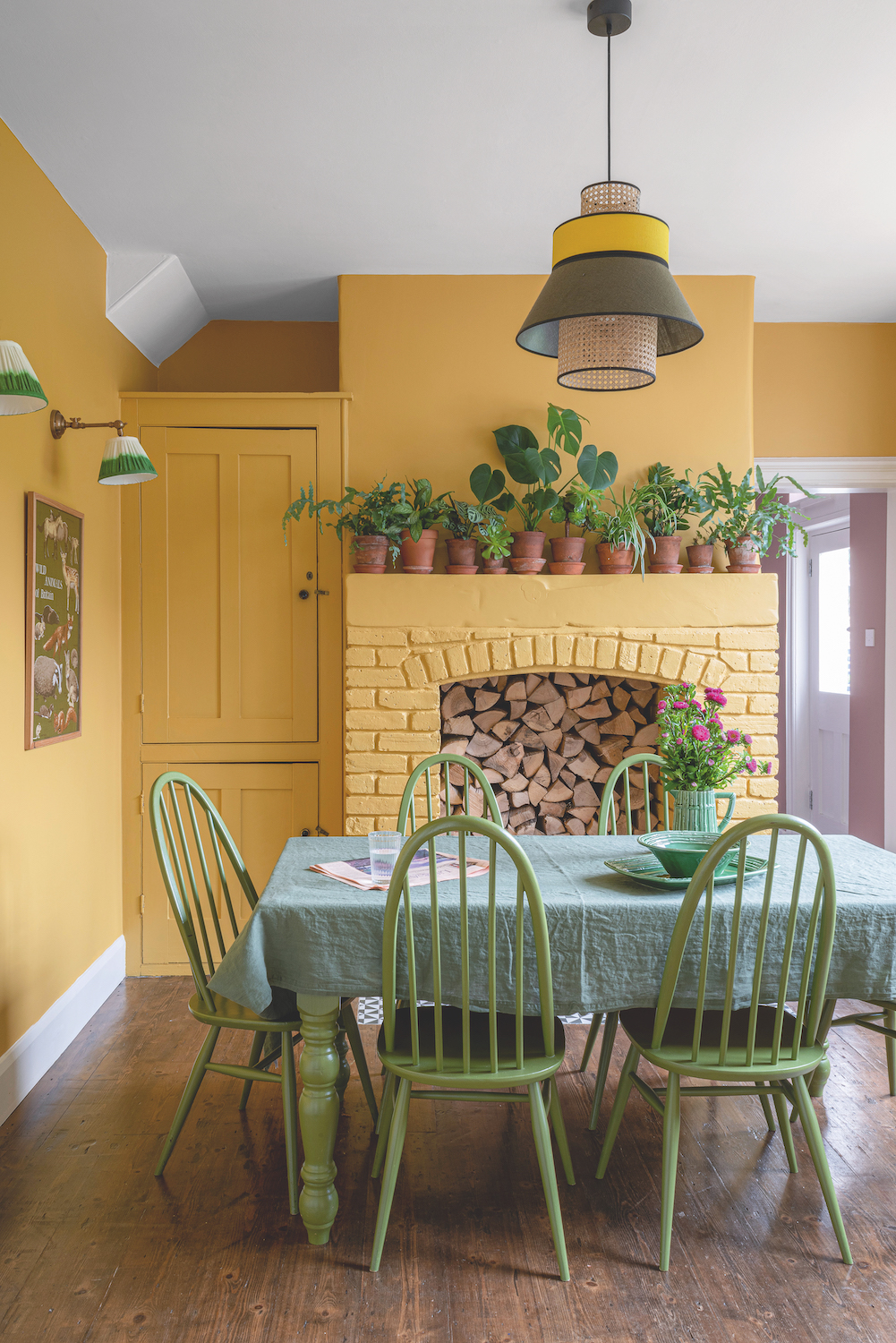
Interior designer Michelle Kelly has used plants to great effect in her projects, particularly in her own seaside holiday home.
In the breakfast room, she's curated the perfect combo of colors, with a packed row of terracotta pots displaying verdant green plants at similar heights, crowned by a mini monstera in the middle of the mantlepiece.
Set against the ego yolk yellow walls, honey-hued logs beneath and green accents in the room, it's a look that's both cool and cosy.
'Plants look great in abundance and I always prefer to use real ones where possible,' says Paula Ellis, floral designer and Toast buyer.
'The choice of plant pot can be as important as the plant, I like to use organic shapes such as earthy terracotta planters.'
3. Plant a tree in your worktop

To make a real impact in your space, go big decorating with plants by opting for one of the best indoor trees to add a sculptural form for your space.
The creative co-founder of Notonthehighstreet and Holly & Co, Holly Tucker wanted an Olive tree in her kitchen. Not the most unusual request you might think, until you realize that it appears to 'grow' out of the Corian worktop in the island.
'It took eight burly chaps to heave it in as it weights hundreds of kilos,' says Holly. 'And that was after they got it through the front door, which at one point seemed impossible.'
4. Cloak a dining space with a living wall
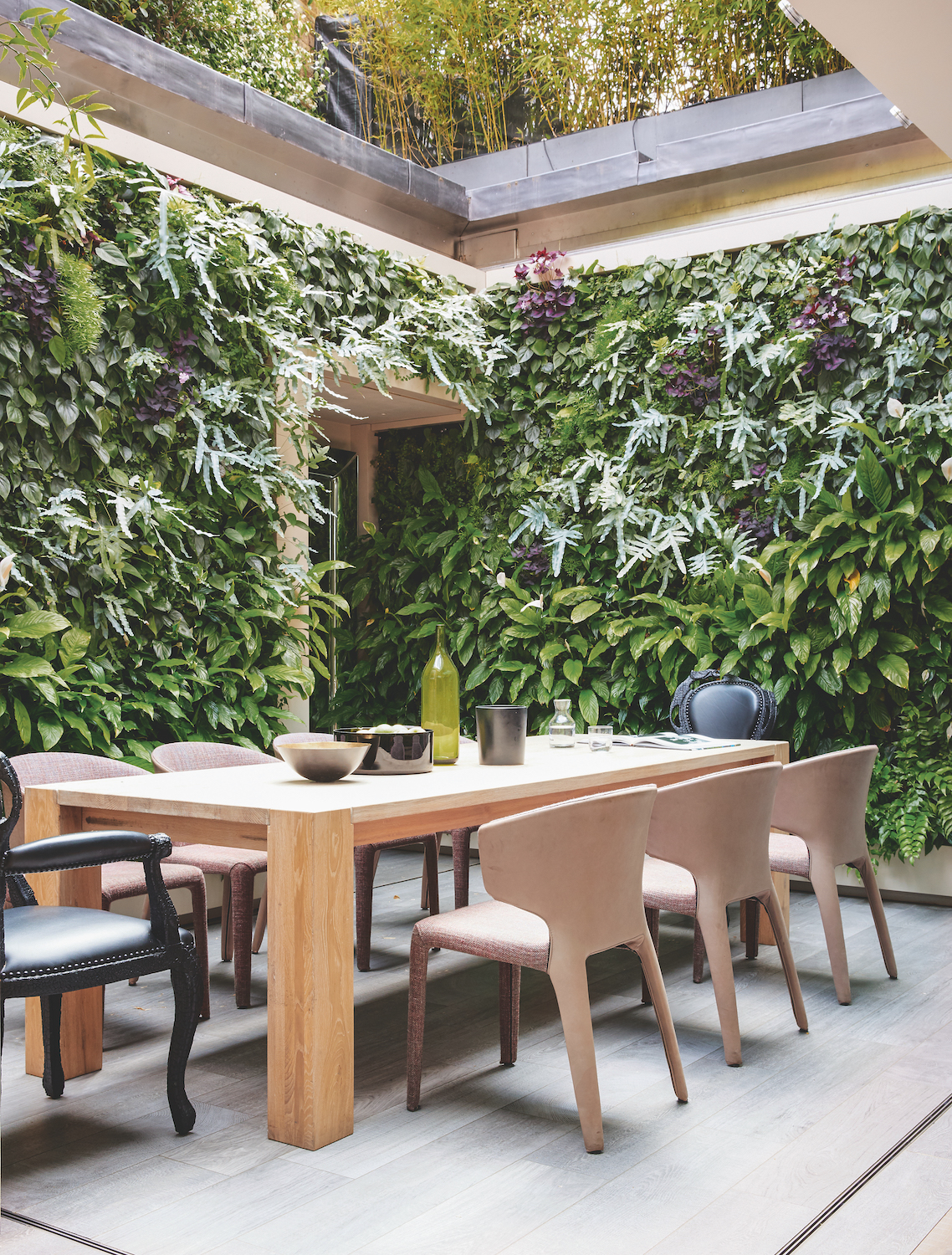
In this modern renovation owned by John Hitchcox, founder of Yoo and his wife Phoebe, a tiny garden with an unused exterior dining area was incorporated inside into the living space.
The addition of a retractable roof and the lush vertical garden gives the space an outdoor feel and enables the family and their friends to dine under the stars whenever the weather allows.
John loves how they have created a light green-filled oasis. 'The mirrored door that opens onto the dining area gives the impression you're stepping into a secret garden,' he says.
5. Trail foliage high for a hanging installation
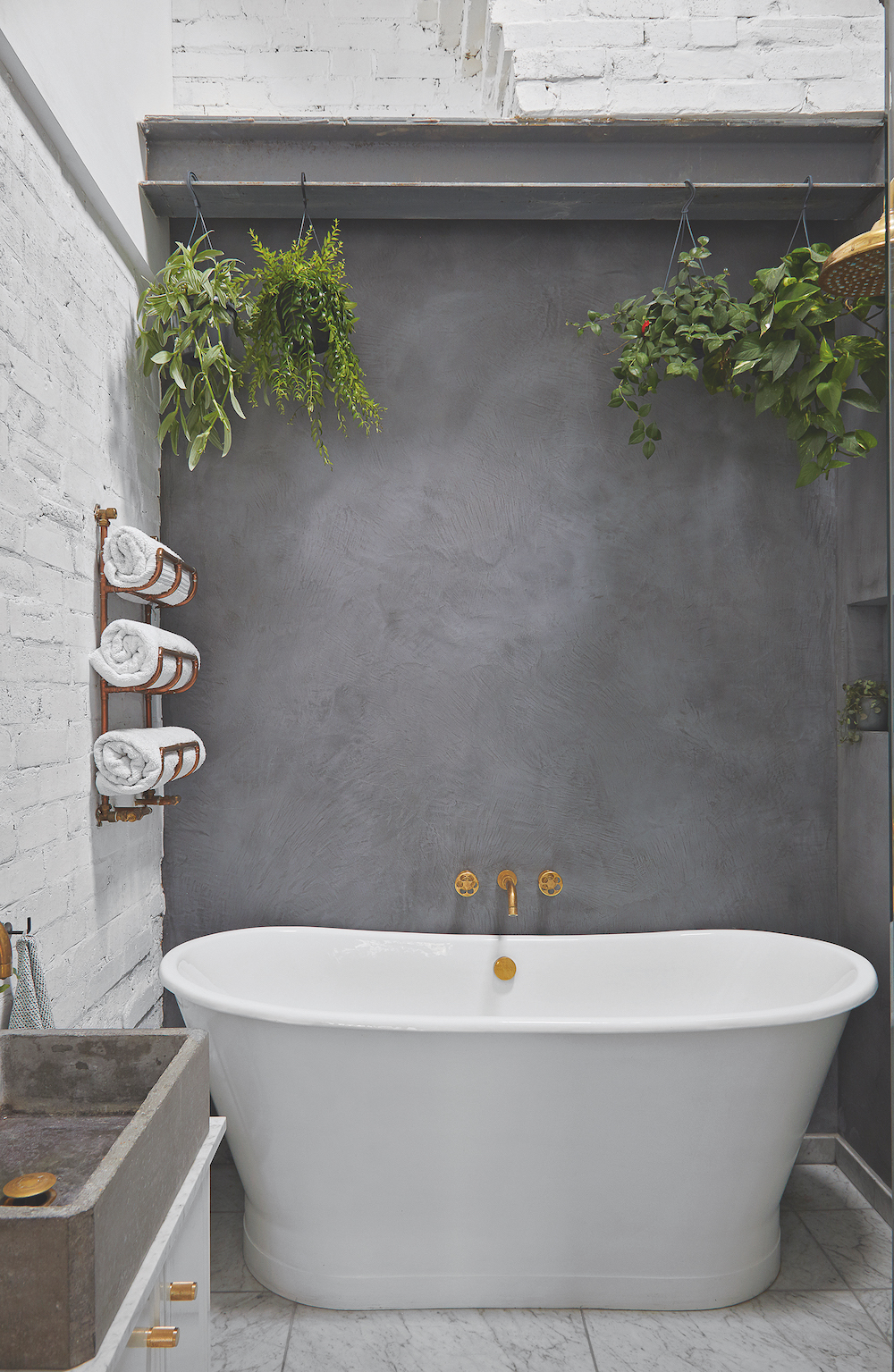
Lacking shelf space in the bathroom? No problem, hang ferns, golden pothos and other trailing and humidity-loving species from a beam, ledge or pole fitted just below the ceiling.
Make sure your plants have enough light and that you're able to access them to water them. When it comes to watering your plants, hanging planters like these can be easily unhooked and taken down for a weekly water.
'Create a hanging installation with varieties hung at different levels to create depth and balance,' says Paula Ellis, floral designer. 'I personally love trailing or creeping plants such as Philodendron Scanden as they have a tendril root.
'Chestnut vine is also a wonderful creeper, although harder to come by and Grape Ivy is a wonderful trailer which looks great in a hanging planter.'
6. Go for a greenhouse effect
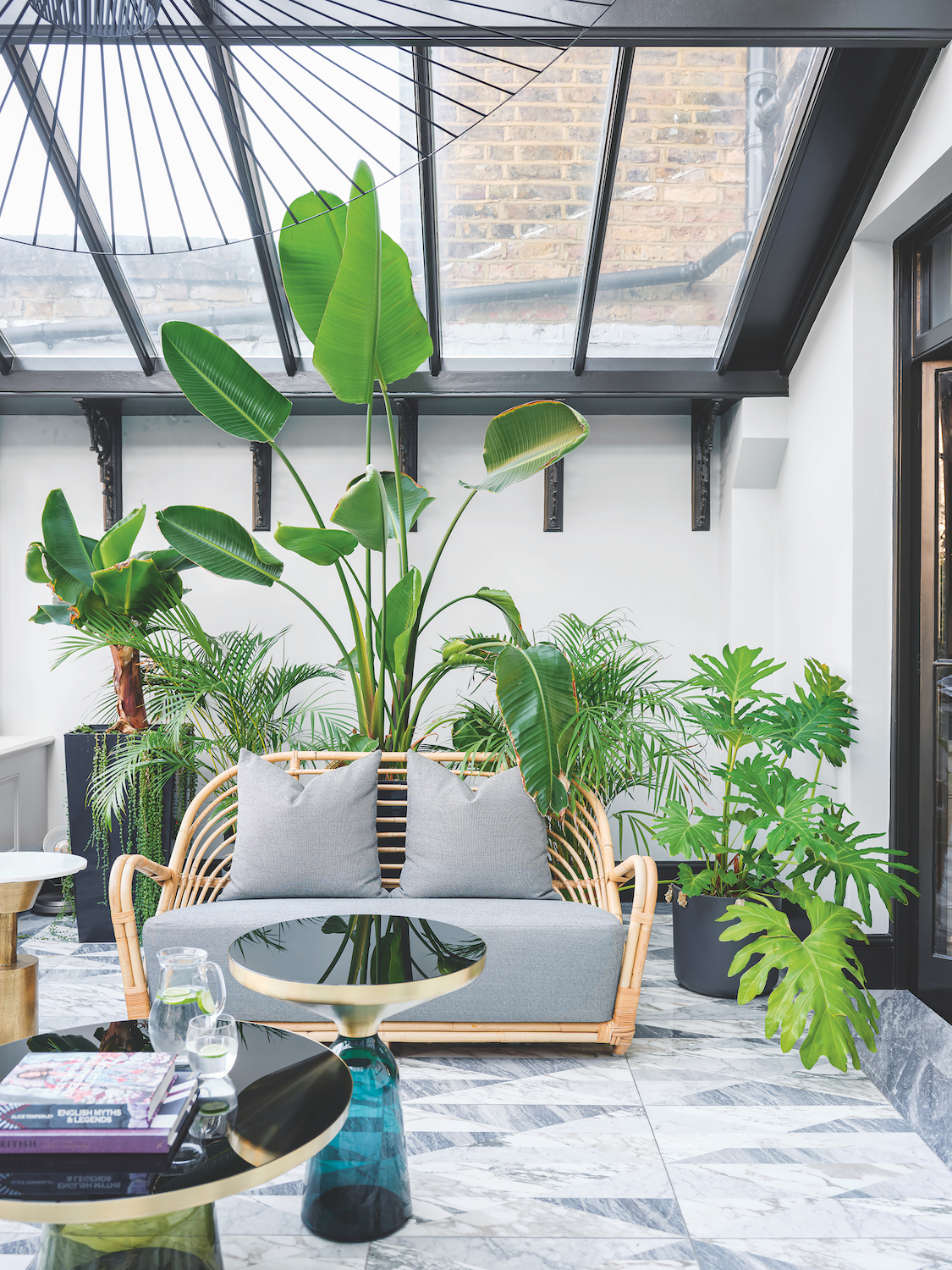
Most plants need plenty of natural light, so are likely to thrive in a well-glazed room. If you have an area with generous amounts of glazing, such as a roof light or large windows, large tropical species can flourish.
Bringing their big bountiful beauty to your home, Bird of Paradise, banana plants and other similar leafy giants will offer vacation vibes all year round.
'Plants bring liveliness and interest to a space, drawing your focus to certain areas of a room or pulling colors and textures together,' says Elisabeth Rogoff, Principal at Champalimaud Design.
'Once I have decided on the larger pieces within a room, I will bring plants in as a second layer of accessories, to elevate and bring together my designs.'
7. Frame a doorway with foliage
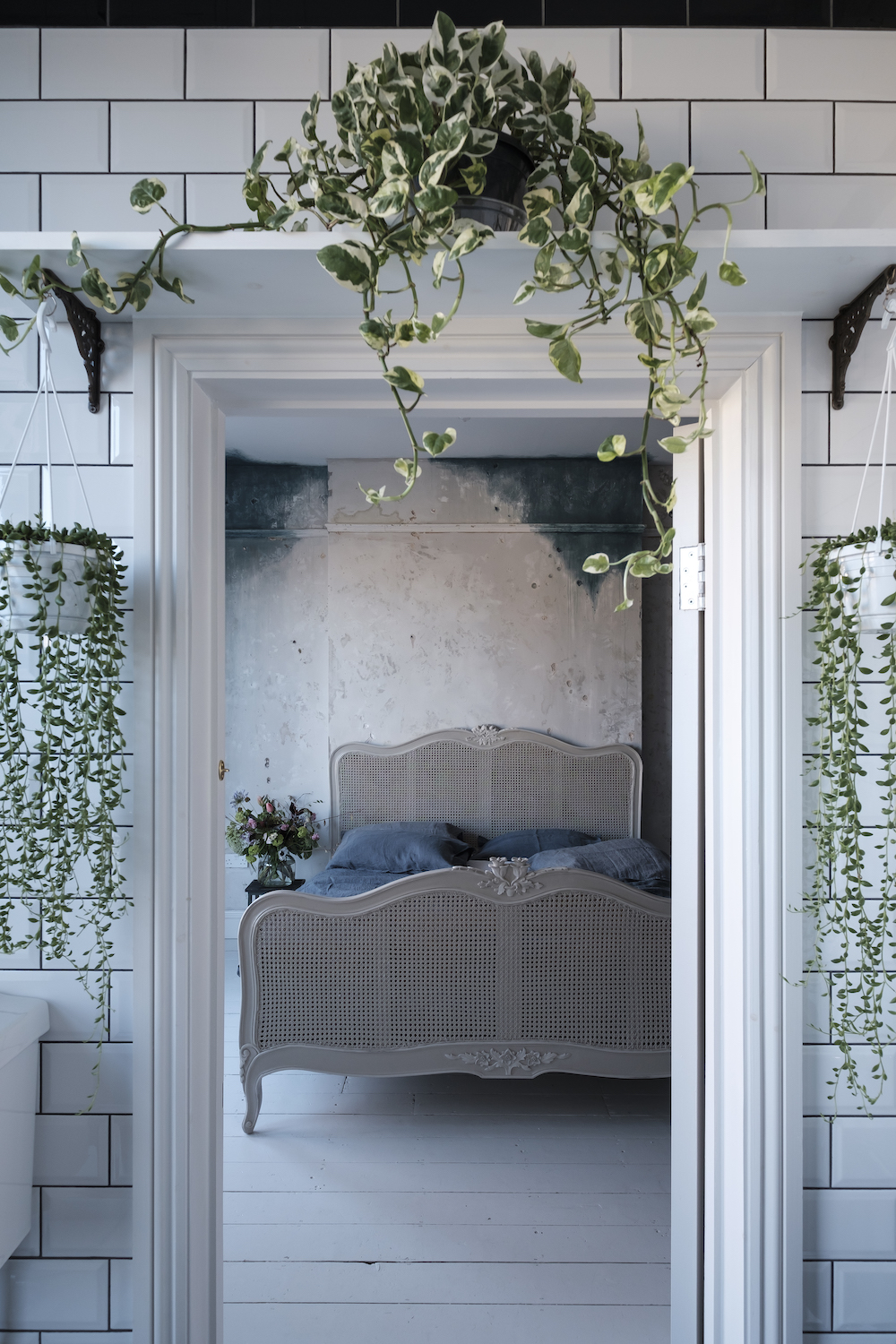
A light-filled bathroom is generally a good place for plants, as there are many species that thrive on humidity. If it's a smaller space without lots of natural light, look for the best plants for low light levels too. If you lack space elsewhere a shelf over the doorway provides a great spot, especially if you can utilise the brackets for hanging planters too.
'Shelves dressed with trailing plants always looks very elegant in a bathroom,' says Irene Gunter at Gunter & Co.
'I never forget to add plants. It’s just a question of pairing the perfect plants with the client. Some clients are very green-fingered, so you can get creative. Other people need plants that are low-maintenance and don’t require a huge amount of TLC.'
'You can also hang plants from the ceiling at different heights for a statement feature - this looks especially amazing in the bathroom,' adds Jane Rocket, co-founder, Rockett St George.
8. Opt for a living centrepiece
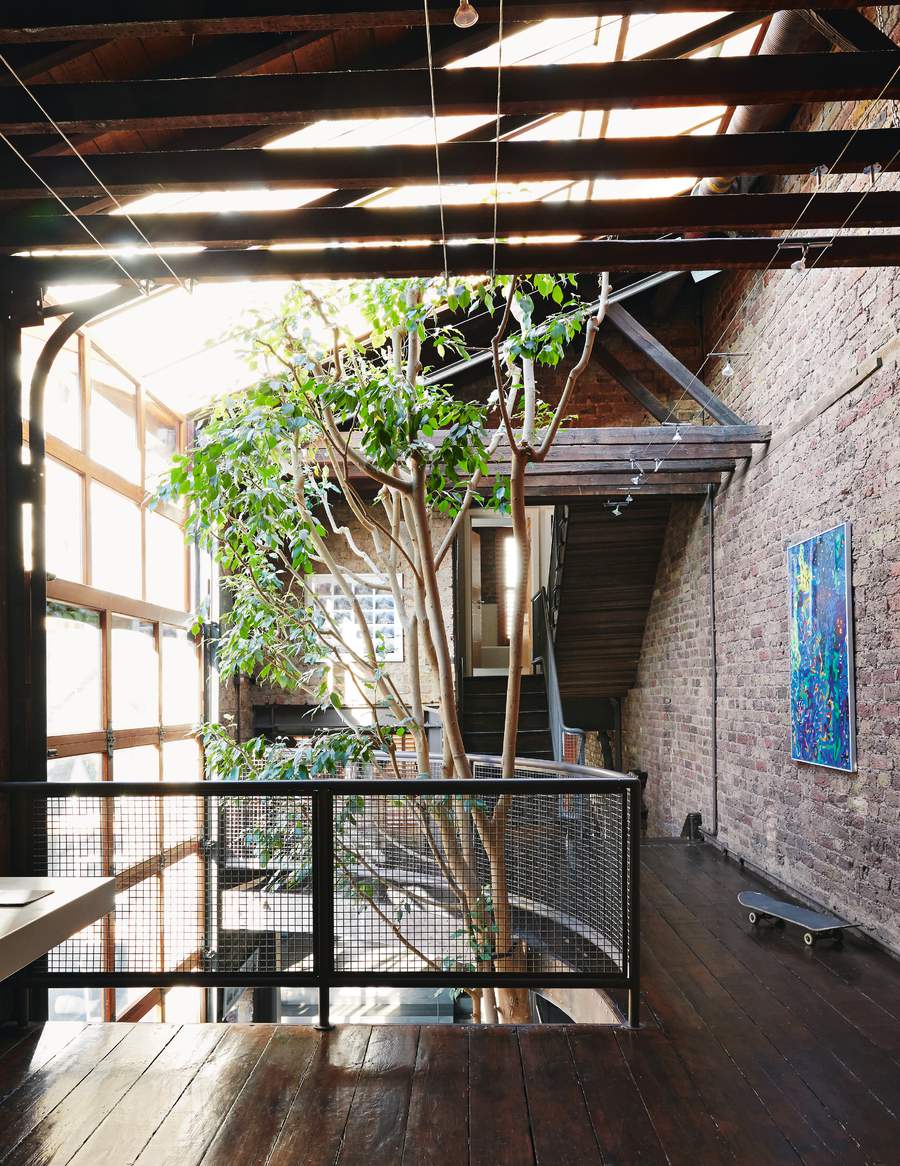
For pure eye-catching drama, an actual tree growing up through a mezzanine in the middle of your home, takes some beating.
'I have worked an indoor tree into my designs on occasion,' says Irene Gunter at Gunter & Co. 'If you're considering this, think about where the tree is going to go, which species will work best, and whether you have the ceiling height to accommodate it.'
9. Offset verdant green against a black backdrop
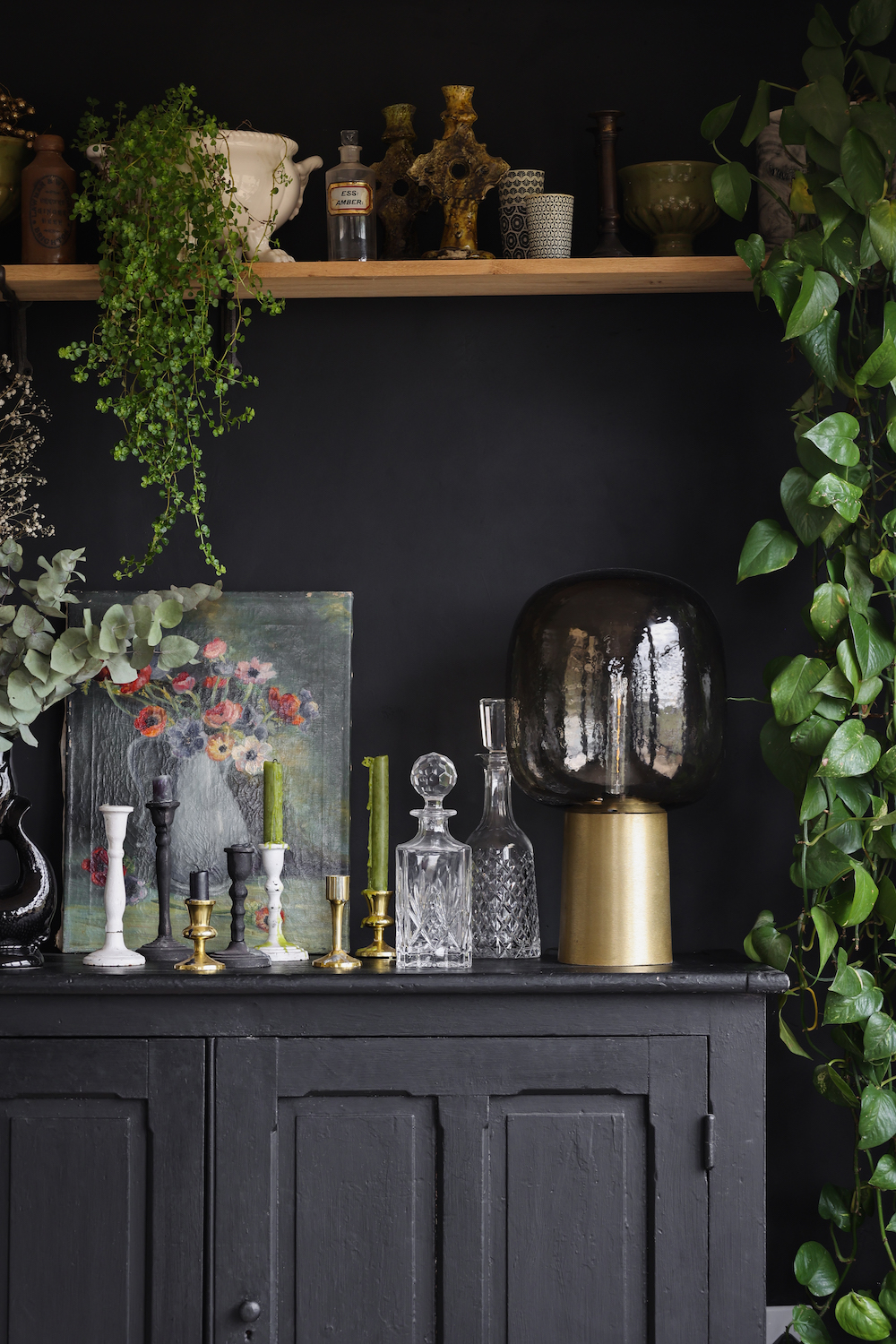
Think about where you're placing your plants and what you're setting them against, as this will influence the look and feel of the room.
'The trick with decorating with plants is to play around with height and texture, just as you would with any other display or style spot in your home,' says Jane Rockett, co-founder of Rockett St George.
'I have lots of trailing plants styled high on shelves in my kitchen and dining space and pair these with smaller leaf varieties and dried eucalyptus in vases to create that variation in height and texture.
'Another trick when decorating with plants is to be bold with colour and not shy away from creating a contrast. I love to use black as a backdrop for greenery in my home. Whether used on the walls or for larger furniture pieces, dark colours will make your plants simply glow.'
10. Choose a statement planter
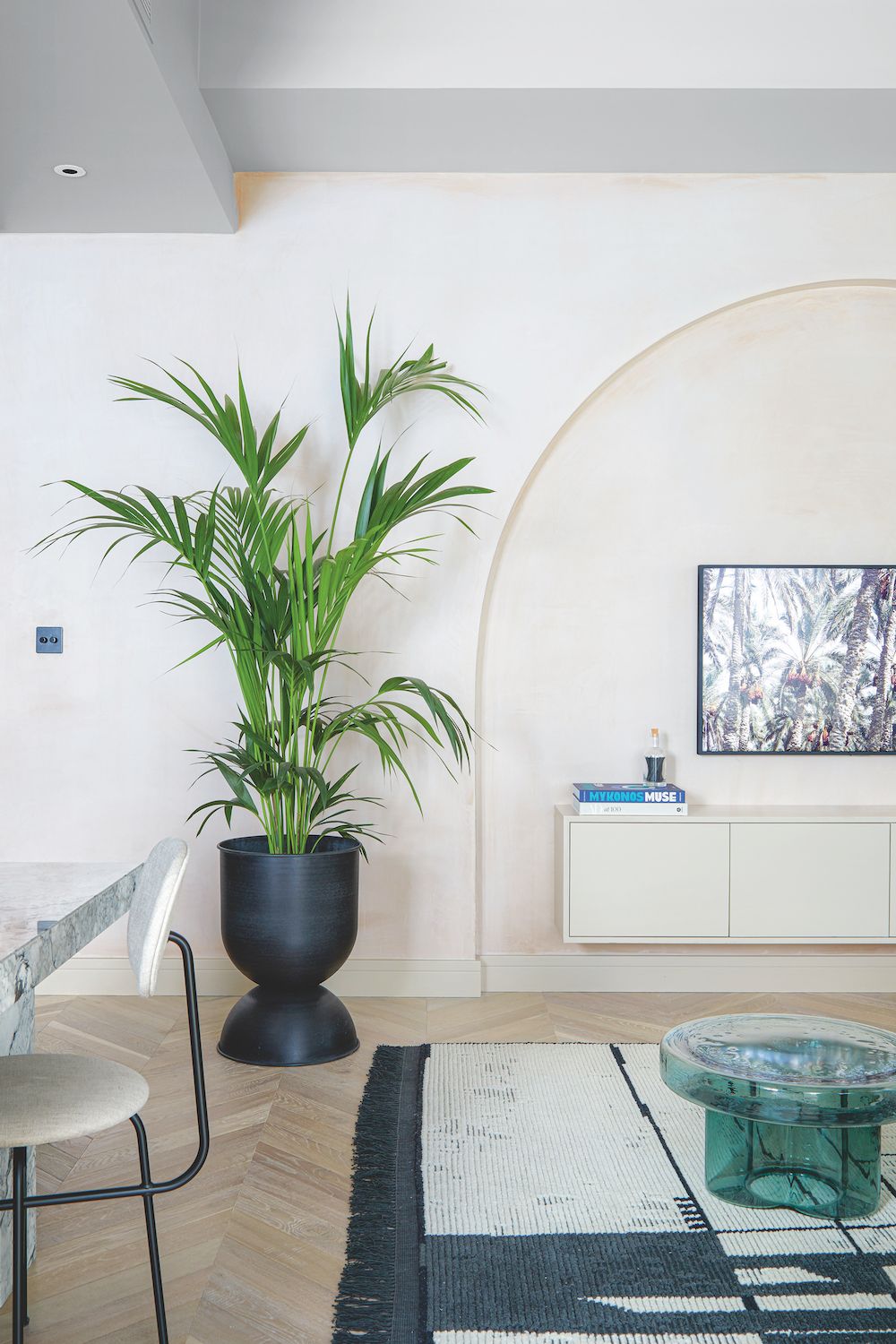
The types of plant you choose for your scheme are important, but so is what you display them in. Think just as carefully about the planter as the plant, ensuring the colour, shape and style of the pot suit the plants you've opted for.
'I always think adding a plant in a bespoke planter is a great way to add sculpture and height to a room,' says Elisabeth Rogoff, Principal at Champalimaud Design. '
'I love Kentia palm - for its elegance and stature, or Monstera with its huge, glossy leaves are striking, for adding a big impact.'
How can plants be used as decorations?
Place a tall, lush plant such as a Kentia palm or Monstera in a bare corner to enliven it; line a row of succulents along a shelf or hang Boston ferns at different heights in the bathroom. 'Plants have the ability to freshen up a room and create a welcoming environment,' says Elisabeth Rogoff, Principal at Champalimaud Design.
'While I like to use plants to create a seamless transition between outside and in, you should still always be conscious to not overwhelm a space with plants, and carefully consider where you place them.'
Why should I decorate with plants?
'Plants create a sense of connection with the garden, they are the perfect way to introduce harmony between the inside and outside spaces of your home,' says Jane Rockett co-founder, Rockett St George.' Therefore, I always style plenty of plants in the rooms of my home that look out over nature.'
How do I style my house plants?
'Firstly consider how much maintenance that a plant will require, and then choose to hang or place it where the best source of light is within a room. Ideally, choose a plant that is undemanding but stylish,' says Elisabeth Rogoff, Principal at Champalimaud Design.
'Succulents with their varying sizes, shapes and colours make for an eye catching display when you group and layer them together.'
Jacky Parker is a freelance lifestyle journalist and writer, producing a wide range of features for magazines and digital platforms. She has written for Livingetc and its sister titles, Homes & Gardens and Country Homes & Interiors for more than 15 years, both as a freelance contributor and as Acting Digital Editor and Acting Style Content Editor, regularly reporting on the latest interiors, gardens and wellness inspiration, speaking to experts in their respective fields, and discovering the best tips.
Jacky has also written for other publications, including Sunday Times Style, The Telegraph, Architectural Digest, House Beautiful, ELLE Decoration, Red, Grand Designs and more.